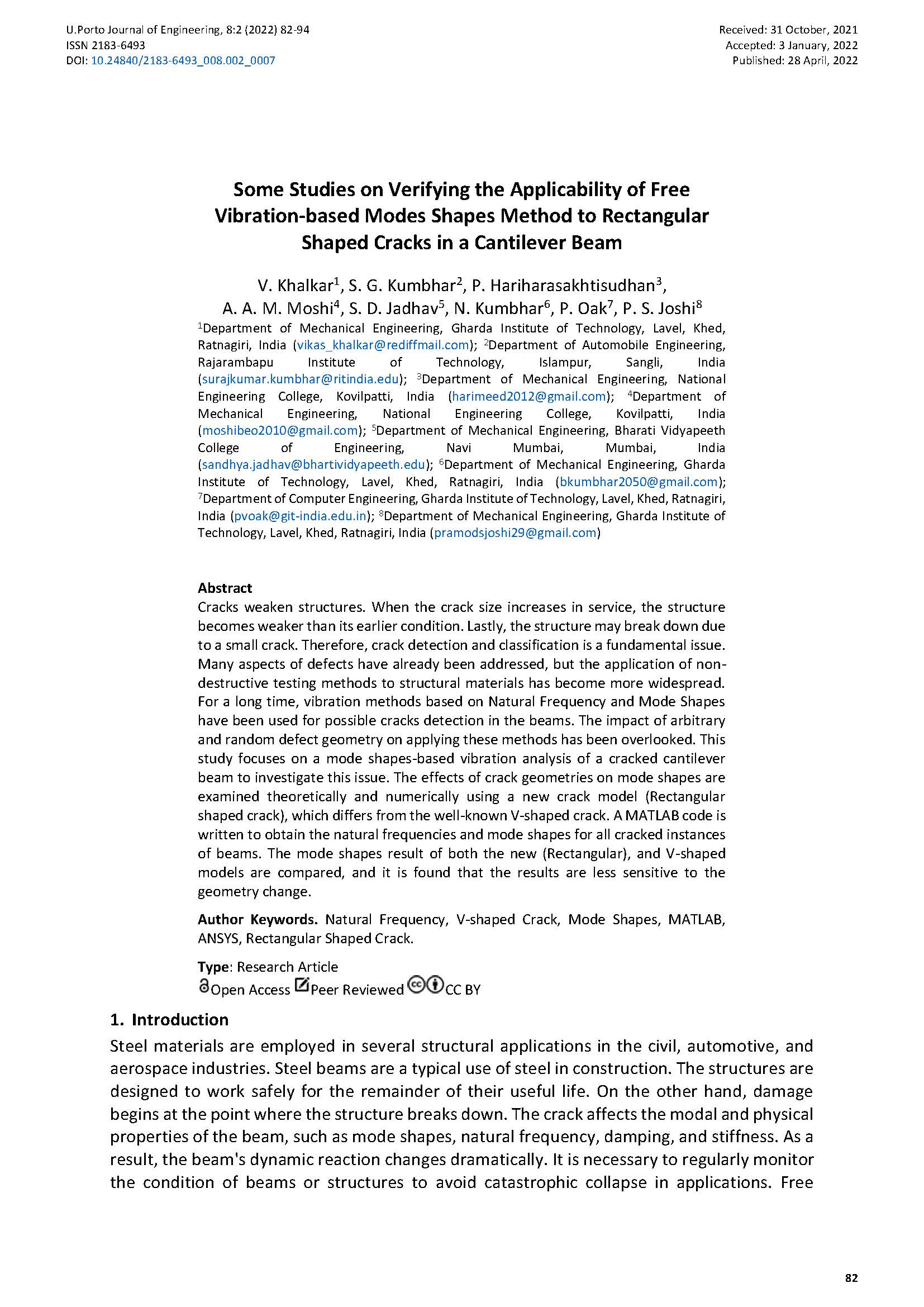Some Studies on Verifying the Applicability of Free Vibration-based Modes Shapes Method to Rectangular Shaped Cracks in a Cantilever Beam
Main Article Content
Abstract
Cracks weaken structures. When the crack size increases in service, the structure becomes weaker than its earlier condition. Lastly, the structure may break down due to a small crack. Therefore, crack detection and classification is a fundamental issue. Many aspects of defects have already been addressed, but the application of non-destructive testing methods to structural materials has become more widespread. For a long time, vibration methods based on Natural Frequency and Mode Shapes have been used for possible cracks detection in the beams. The impact of arbitrary and random defect geometry on applying these methods has been overlooked. This study focuses on a mode shapes-based vibration analysis of a cracked cantilever beam to investigate this issue. The effects of crack geometries on mode shapes are examined theoretically and numerically using a new crack model (Rectangular shaped crack), which differs from the well-known V-shaped crack. A MATLAB code is written to obtain the natural frequencies and mode shapes for all cracked instances of beams. The mode shapes result of both the new (Rectangular), and V-shaped models are compared, and it is found that the results are less sensitive to the geometry change.
Downloads
Article Details

This work is licensed under a Creative Commons Attribution 4.0 International License.
Authors who publish with this journal agree to the following terms:
- Authors retain copyright and grant the journal right of first publication with the work simultaneously licensed under a Creative Commons Attribution License that allows others to share the work with an acknowledgement of the work's authorship and initial publication in this journal.
- Authors grant the journal the rights to provide the article in all forms and media so the article can be used on the latest technology even after publication and ensure its long-term preservation.
- Authors are able to enter into separate, additional contractual arrangements for the non-exclusive distribution of the journal's published version of the work (e.g., post it to an institutional repository or publish it in a book), with an acknowledgement of its initial publication in this journal.
- Authors are permitted and encouraged to post their work online (e.g., in institutional repositories or on their website) prior to and during the submission process, as it can lead to productive exchanges, as well as earlier and greater citation of published work (See The Effect of Open Access).

